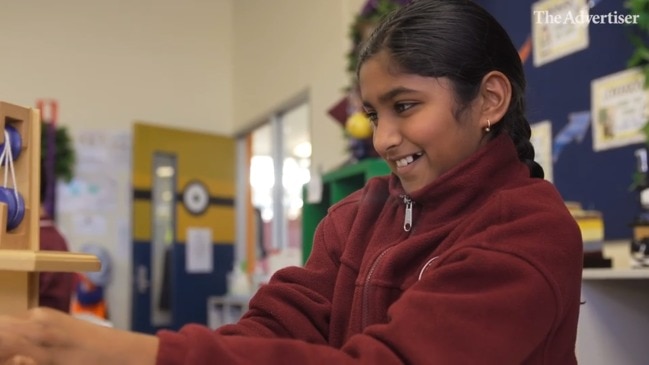NAPLAN: SA’s best-performing Catholic and Independent schools – see the list
Nestled in historic Clare, Catholic school St Joseph’s has delivered exceptional NAPLAN results. Search our easy to navigate database to see every SA school’s results.

Schools Hub
Don't miss out on the headlines from Schools Hub. Followed categories will be added to My News.
- NAPLAN tables: The SA schools that get an A for improvement
- Who’s top of the class? See every school’s NAPLAN performance
- Redeem these great rewards with your Advertiser+ subscription
Nestled in historic Clare, St Joseph’s School has delivered among the most exceptional NAPLAN results in South Australia – recording averages “well above” all other Australian students in every test.
It also recorded averages well above its peer schools in two-thirds of 15 tested areas and had 99.7 per cent of tests meeting national benchmarks.
While NAPLAN was only one measure of student and school performance, St Joseph’s principal Peter Shearer said it did provide valuable information.
“Instead of looking at NAPLAN in a negative light we see it as positive – providing staff, parents and students with a snapshot of where the students sit at one point in time,” he said.
“Our results are owned by the whole school – not just the year 3, 5 and 7 teachers.”
Across years 3, 5 and 7, St Joseph’s recorded the fourth highest average in 2019 in SA after Linden Park Primary School, St Peter’s Collegiate Girls School and St Peter’s College.
Those three schools also delivered average results well above all Australian students but not as consistently as St Joseph’s when compared to schools with students from similar socio-educational backgrounds.
The NAPLAN – or National Assessment Program Literacy and Numeracy – tests in reading, writing, spelling, grammar and numeracy are written by all Year 3, 5, 7 and 9 students.
SCROLL DOWN TO SEARCH NAPLAN RESULTS FOR EVERY SA SCHOOL

“NAPLAN is a useful tool because it provides valid and reliable nationally-comparable reference points for school-based assessment of learning,” Catholic Education SA curriculum, learning and wellbeing manager, Anna Mirasgentis said.
“It is just one measure among a range that we use to monitor learning improvement for individual students and school cohorts.
“We have been exploring ways to use a broad range of assessment types to provide greater understanding of student learning and greater consistency in teachers’ assessment judgment.
“Catholic Education SA recognises that the effective use of data depends on effective leadership, skilled classroom teachers, a culture of inquiry and collaboration.”
Association of Independent Schools of SA chief executive Carolyn Grantskalns said “NAPLAN provides some useful data for schools, systems and governments”.
“However, it should not be used to compare schools with one another because the calculation of ‘like schools’ is based on unreliable data,” she said.
“The delay between students taking the test and the provision of the results means that the test cannot be used by individual teachers as they plan the learning for their class in any particular year.
“NAPLAN results do enable individual schools to compare groups of students over time to track performance at a school level but it is a very costly way of doing that.
“All schools use a range of ways to monitor individual student progress and to improve learning outcomes for students and NAPLAN is only one small part of these.”
Mr Shearer said at St Joseph’s the staff use a range of tests and assessments including progressive achievement, early year’s assessment, soundwaves spelling testing and teachers’ professional judgment.
“We have created a culture of continuous improvement – which is one of our school’s core values,” he said.
“If we continue to value assessment tasks and use all avenues of feedback to inform practice and professional development we believe we continue to gain even better results.
“It is important to remember this is just one part of the students’ development – we spend just as much time and effort looking at their wellbeing, social and physical development.”
St Joseph’s now has 272 students in reception to year 7.
The school will expand to year 9 from 2022 with a $6 million capital works investment announced in June which will include specialist STEM and arts facilities.

